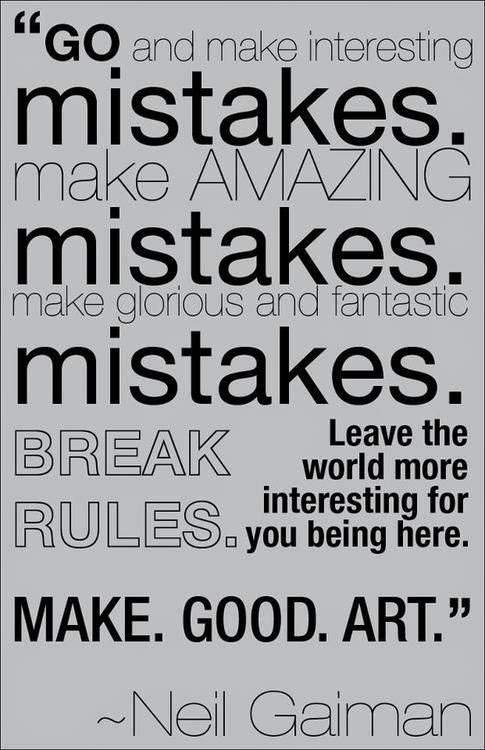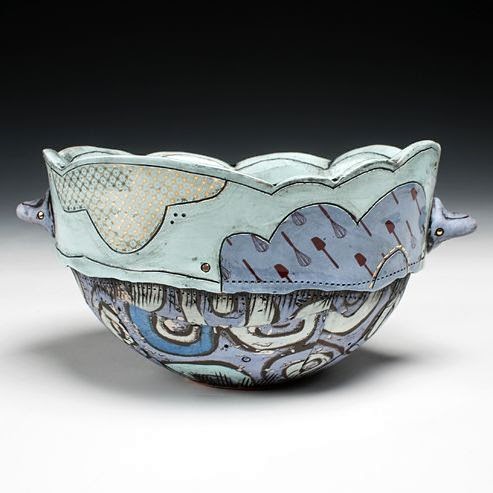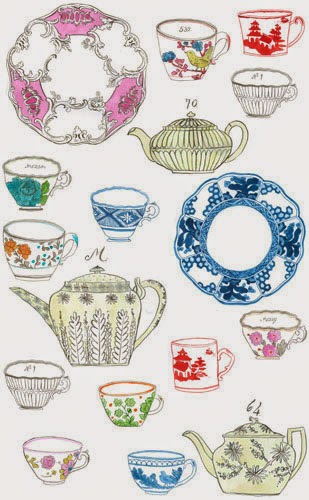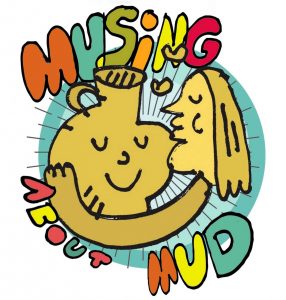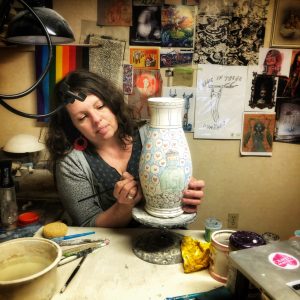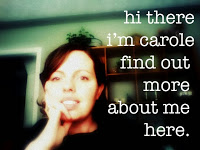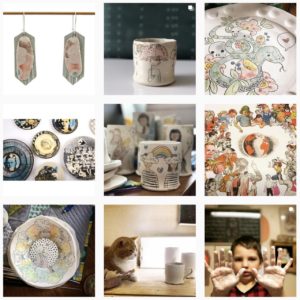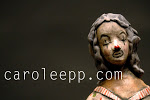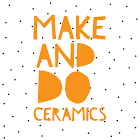So you may have noticed that starting last friday I’ve begun (what will hopefully become) another weekly feature on the blog. Inspiration comes from numerous obvious and sometimes less clear sources. Fridays will now be a chance for readers of musing to share what inspires them. So drop me a line with a few lines about you, your inspirations (3 artists, not neccessarily clay based) and some images and join in the fun!
Thanks in advance
xoxo
carole
My inspirations by Amanda Barr:
Author Neil Gaiman
Molly Hatch
Jason Bige Burnett
My
work is very much a reflection of my personality; bright, colorful, and
highly imaginative. Reality has often been painful, so I and in turn my
work, seek escape in other worlds. Seeing creatures in passing clouds,
dreaming of alternate worlds, delving into books about eras long past
make each day a new and fun adventure, for myself and I hope those who
use my work.
work is very much a reflection of my personality; bright, colorful, and
highly imaginative. Reality has often been painful, so I and in turn my
work, seek escape in other worlds. Seeing creatures in passing clouds,
dreaming of alternate worlds, delving into books about eras long past
make each day a new and fun adventure, for myself and I hope those who
use my work.
Neil
Gaiman writes some of the best science fiction and fantasy worlds in
literature today. His writing is funny, sad, exciting and above all
heart-felt. From his adult fiction (Startdust, Neverwhere, Anasi Boys,
Sandman, The Ocean at the End of the Lane) to young adult and children’s
books (Coraline, The Graveyard Book, Chu’s Day) he has never failed to
capture me completely. His 2012 commencement address-turned-book “Make
Good Art” is my go-to when I need extra motivation to keep going.
Gaiman writes some of the best science fiction and fantasy worlds in
literature today. His writing is funny, sad, exciting and above all
heart-felt. From his adult fiction (Startdust, Neverwhere, Anasi Boys,
Sandman, The Ocean at the End of the Lane) to young adult and children’s
books (Coraline, The Graveyard Book, Chu’s Day) he has never failed to
capture me completely. His 2012 commencement address-turned-book “Make
Good Art” is my go-to when I need extra motivation to keep going.
Jason’s
work has that blend of simple (form) and complex (surface) that has,
since I first saw a piece several years back, called to me. Playful yet
poignant, his work is everything I’ve strived to create. His subtle
manner of storytelling is some of the best around, and of course he is
as beautiful a person as his work.
work has that blend of simple (form) and complex (surface) that has,
since I first saw a piece several years back, called to me. Playful yet
poignant, his work is everything I’ve strived to create. His subtle
manner of storytelling is some of the best around, and of course he is
as beautiful a person as his work.
Molly
Hatch’s work first spoke to me because of the historical references- I
loved Wedgewood long before I ever began working with clay. Her more
recent design work- moving into fabric, wallpaper, glassware- is
something I am fascinated with and would love to someday do myself. What
I love most about Molly is how she has elevated the functional pot into
artwork with her displays of teacups and teapots in frames and of
course her “plate painting” pieces such as Physic Garden with the High
Museum.


